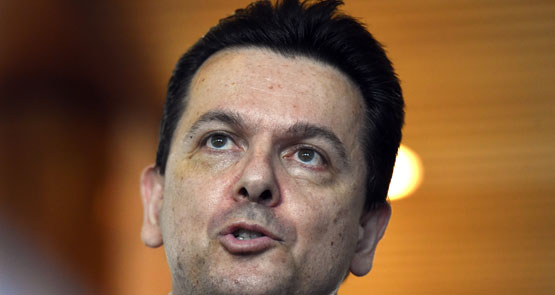
Can anyone explain why Australia’s bizarre Senate voting system requires candidates to run in groups of at least two, effectively making it impossible for a single independent candidate to be elected?
The performance of individual candidates who are dumped out of site and out of mind below the line on the Senate ballot paper has been so bad in recent years, the concept may as well be abandoned as part of the current reforms.
Even those independents who fall into line with the collectivist mentality and form a group have done terribly, largely because they are not allowed any branding above the line, as was explained in this Crikey piece yesterday.
An analysis of the last three federal elections shows that independent Senate candidates have virtually no chance of success and have largely given up even trying.
At the 2007 election, 19 of the 136 grouped candidates (a healthy 14%) that appeared above the line in the eight Senate elections across Australia were independent of any registered political party.
But how did they go?
Leaving aside Nick Xenophon’s remarkable 15.32% primary vote, the highest primary vote achieved by an independent group was just 0.45% in Tasmania. The public funding enjoyed by the big parties, which always get over the 4% threshold, was not even close for the independents. This is a huge taxpayer-funded advantage, which will rise to about $2.70 per vote once we get into the 2016-17 financial year.
Also during the 2007 federal election, 17 ungrouped independent candidates tried their luck relegated below the line on the ballot paper. The strongest vote recorded anywhere was just 0.32% in the Northern Territory where there was limited choice for voters with only 5 groups above the line.
In 2010 there was a total of 134 groups above the line, and a healthy 16.4% or 22 were independents. However, the best primary vote achieved by an independent group was only 0.29%, aided by the donkey vote in Western Australia. Even former Democrats leader Cheryl Kernot only managed 0.11% in NSW, the same as what our married couple team received in Victoria.
In addition, 2010 had 19 masochistic independents try their luck solo below the line, and the strongest result was 1.12% in the ACT, but most came stone-motherless last with less than 0.02% of the vote.
After deposit and nomination requirements were toughened, the field of Senate independents really thinned out at the 2013 federal election.
The explosion of preference-harvesting pop-up parties organised by the likes of Glenn Druery and David Leyonhjelm brought a total of 228 groups to qualify for an above-the-line position across the eight states and territories.
However, only eight of these (or a miserable 3.3%) were independents. The best result was just 0.1% in South Australia. There were 10 independent candidates who ran solo below the line, and the highest primary vote achieved was just 0.21% in the ACT.
To only have 18 independent options in the Senate across Australia at the 2013 election tells you that the system is broken and the barriers are just too high. This can be fixed in the coming weeks.
The Greens and Senator Nick Xenophon are said to be comfortable with the idea of lowering the barriers to entry for smaller parties and independent candidates in future Senate elections.
However, with Labor out of the negotiations, such a move could only happen if the government agrees to give some ground after next Tuesday’s hearings of the Joint Standing Committee on Electoral Matters.
If the Liberal Party is the party of the individual, which believes in competition and reducing red tape, then how can the current situation be tolerated?
Under the current reform proposal, the playing field will be even further tilted against independents by the introduction of above-the-line logos for registered parties, while independent groups will be constrained by the plain packaging of a random alphabet selection.
When I was elected to City of Melbourne in 2012, it was a Senate-style proportional representation system in an undivided electorate. Each group was permitted a maximum of six words. In my case that was: “Stephen Mayne: Independence, Experience, Transparency, Accountability.” That delivered a 6% primary vote with no campaign budget. Why shouldn’t a similar system apply in the Senate? Parties should be able to include their name, plus a prescribed amount of words to describe their platform, which should also be afforded to independent groups.
Of the 95 independent groups or below-the-line individuals who have contested Senate elections since 2007, Nick Xenophon is the only one to have qualified for public-funding support by polling more than 4% of the primary vote.
How is this encouraging a start-up culture and enterprising individuals to have a go at politics?
Given the much larger fields than in lower house seats, the public funding threshold in the Senate should be cut to just 0.5% of the primary vote.
That would still not assist the vast majority of independent candidates, but at least some of the smaller parties such as the Liberal Democrats, Family First and the Sex Party would be treated more equitably as they take on the majors.
This is the sort of amendment that would show some genuine regard to the crossbench who quite rightly see a big party conspiracy in the current proposals.
*Stephen Mayne this morning lodged a formal submission with the Joint Standing Committee on Electoral Matters and has requested an opportunity to appear at the public hearings scheduled for Tuesday morning.








Reform should be about dumping above the line voting.
And instead of having to fill out the whole ballot paper, you should just have to fill out a certain number – perhaps 12 for half Senate and 24 for full Senate elections.
And to save paper you could have them all listed as individuals, with party in small writing underneath, and grouped together in columns. Better yet, have them distributed randomly.
Good luck next week, but this is a stitch up for the parties.
I’m not a huge fan of the independents, half of them would be cyphers set up by the major parties anyway, but how the hell does a genuine independent get up in the new system?
If I were to consider voting Above the Line for the Senate election, what does that really mean? In an ordinary election, 6 candidates for each state will become senators.
If voting number 1 for a party gives my vote to six candidates from that one party, in the order decided by the preselectors or party factions, then by the time I vote for party number 2, I am voting for candidates 7 to 12 as chosen by that second party. By the time I have numbered 6 boxes, I have voted for 36 candidates as chosen by their parties, (not by me)! Can I choose 3 candidates from Party 1, then three candidates from Party 2? Maybe there are some particular individuals that I would not want to vote for under any circumstances!
It is not clear how the votes will be counted when electors at the polling booth vote for six party groups (for persons unnamed on the ballot paper?). Will the party numbered 1 just get six votes for its chosen delegates, and will it not matter about the other party numbers? Will they actually not get any vote unless they are the Number 1 party?
Maybe if we could just change to having a minimum number of votes Under the Line, say numbering at least 6, or even 20, of the individual candidates, that would be simpler and fairer. Why on earth do we need to vote for over 100 candidates Under the Line when only 6 senators are to be elected?
Stephen: Australians loathe individuals {mistaking the word for individualism} even more than they loathe a week without footy.
Wayne Cusick, all of your ‘improvements’ have been suggested before, and when I was very young and uninformed I even supported some of them.
Some of the other comments on this thread show a sad inability to understand P.R. not dissimilar to those of the Crikey Commissariat.
As Crikey has been told on many an occasion, if they would run an article by someone far more knowledgeable than they are about P.R. Voting it’s there for the asking; but they don’t dare ask.
Naturally the Crikey Censor will delay this offer knowing that it leaves more time for readers to move on to other issues.